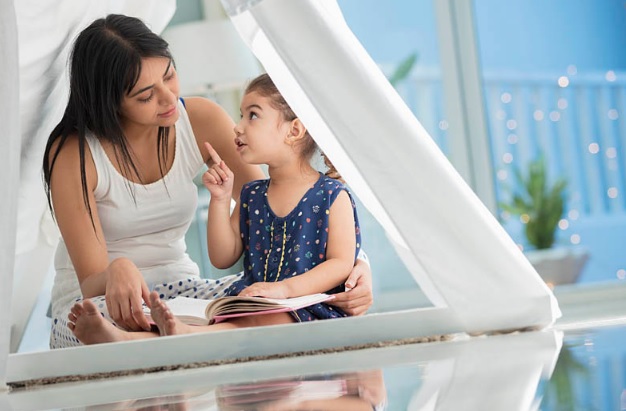Natural materials that are healthy, safe and innately enjoyable for children with simple moving parts like wheels and rope and elegant shapes–no flashing lights, no buzzes, chimes or whistles (no cartoon characters or corporate logs). Containers made of natural materials like woven baskets, etc and activities organised in individual trays and baskets (each tray or basket has everything that the child needs to attempt and complete the task) form the heart and soul of setting any Montessori Activity or Play.
Well, as the debate and comparison go on and on, about plastic toys being less durable, as well as harmful (phthalates, industrial chemical bisphenol A (BPA) can sometimes find their way into plastic toys.), less environment friendly, we totally ignore and under-value the bigger picture – Self Stimulation, Skill Mastery & Creative Play.

1.“Real toys. Mostly wood. Not too many.” – Targeting one skill at a time.
Wooden toys typically are more generalised in their structure, which allows for more creativity among children who play with them, since children need to use their imagination, rather than being directed by the toy itself.
For example: Putting a ball into a box through a small hole allows the child to master one skill ~ it differs from many traditional plastic toys that target multiple skills at the same time, with one part for pushing, one part where the ball drops, another part that makes a sound, so on or there may be a play feature – it may launch a projectile or spin around when a button is pressed. That seems to take all the imagination out of playing.
2. “Real Play which is complete and in order, with a Beginning, Middle and End”
For any Montessori activity, a child may begin with a small part of a sequence, and as they develop, will be able to complete the full work cycle, including replacing the activity on shelf.
The child achieves a sense of peace and satisfaction after completing the activity. They also gain mastery of the activity after thorough repetition. What might feel to us as an urge to replace, as we see our children excel in an activity, is their strong sense to repeat and repeat to attain perfection.

3. Real Freedom to Choose – Freedom of Choice by displaying a limited no of activities that they are working to master.
Activities are organised in individual trays and baskets. A point to note is that the activity should be complete (no part missing), exactly their level – challenging enough that it is not too easy yet not too difficult that they give up.
Which is why we started with our Montessori toy Journey with Puzzle Set and a Wooden Stacker. My child loved these activities. Try them out with your child and tell us how much they enjoyed it.




















